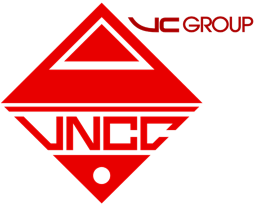

The victory of 1975 Spring Offensive unified the nation after years of loss and grief. The construction industry was entrusted the task of rebuilding the country to be more dignified, more beautiful.
In 1975, the MoC merged Institute of Urban and Rural Planning, Institute of Urban Technical Design and Institute of Civil Design into Institute of Urban and Rural Construction follow the model of collective design institute. Institute of Urban and Rural Construction, with 1000 people was divided into integrated studios including both architectural planning and construction works designing.
Some typical projects of the Institute included University of Finance, Vietnam – Algeria Secondary School, the Institute of Agricultural Science, the Institute of Mathematics, the Institute of Chemistry… restore the destroyed buildings such as Bach Mai Hospital, Hang Co station.
Photo: Vietnam – Algeria Secondary School
A number of projects regarding field of technology were designed such as: Hoankiem Lakeside Post Office, Eastern Building 2, Hoa Sen Satellite Studio. In the pre-liberalization period, hotels were mainly used for foreign experts and international delegation. At that moment, hospitality projects in were designed to develop tourism industry, such as Union Hotel in Bai Chay, Do Son Hotel – Hai Phong, Ministry of Construction Hotel in Sam Son – Thanh Hoa.
In order to meet the demand of taking over the construction industry in the South, the Institute has assigned a team of 147 experienced managers and specialists, most of whom were responsible for and holding management position at local Department of Construction, designing institutes, schools related to construction industry. Some of them also held the position of Vice President, Chairman of the provinces or cities in the South. As for the Central Highlands, in order to strengthen the design force for Dak Lak province, the Institute sent an architecture studio of more than 20 staffs, now became an local architecture consultant company.
To solve the manpower shortage, personnel graduated from architectural and engineering universities were added to the Institute. The postgraduate staffs trained abroad also came back. The second generation of architects and engineers became the key officers to assume the leading position in the institutes throughout the country.
In this period, the government of Vietnam helped Laos build designed and constructed an office area for Laos central government, together with series of projects in Vientiane, Sam Nua, Lac Sao and Khang Khay. These were a curial political, diplomatic, and projects.
Shortly thereafter, the MoC sent a 32-member delegation, whose key personnel were leading design experts of the Institute to Laos to implement the project symbolize the Viet – Laos friendship and set up an temporary design division in Vientiane, Lac Sao.
Photo: The delegation of Vietnam together with Laotian leaders at the inauguration of Sam Nua Hotel.
The contribution of the Institute over the past years was recognized. In 1975, the Party the Governemnt awarded the Third Class Labor Medal to the Institute.
The previous generation passed down their experience while the next one updated modern knowledge and technology. The two generations, together, devoted in developing the institute in the early years after the war. They were the one shouldered VNCC walk on the road of renewal.
Typical projects
1 / Residential area for Diplomatic Corps
2 / Vietnam-Soviet Friendship Hospital
3 / Institute of Mathematical Research
4 / A number of Laotian Central offices in Vientiane, Sam Nua, Lac Sao, Khang Khay